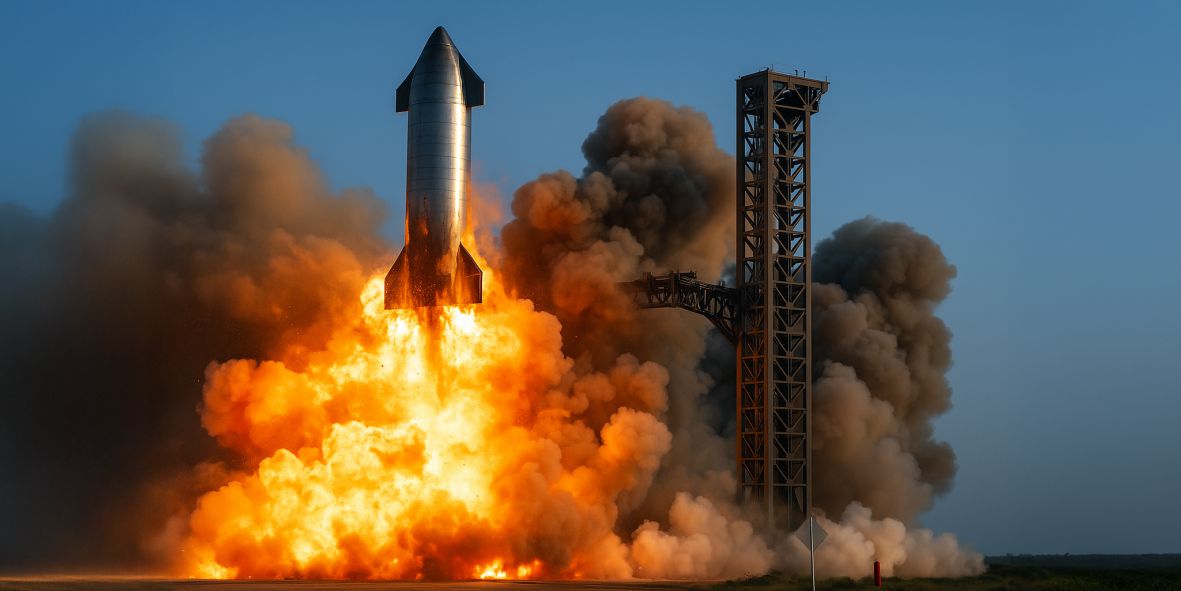Key Takeaways:
- Starship’s 10th test flight prep ended in flames after a nitrogen storage unit failed below pressure limits.
- 2025’s fourth major explosion raises questions about SpaceX’s aggressive Mars colonization timeline.
- No injuries, but FAA scrutiny looms: Previous mishaps forced air traffic diversions and Caribbean debris showers.
- Musk remains defiant, calling it a “first-time failure” for this design, but Mars by 2026 looks increasingly unlikely.
Another Fireball for the Mars Rocket
Elon Musk’s interplanetary ambitions hit another snag when SpaceX’s 400-foot Starship, the towering rocket meant to ferry humans to Mars, exploded during a static fire test in Texas. Eyewitness videos captured a chain reaction of blasts, lighting up the Brownsville skyline like a doomed fireworks finale.
Musk retweeted:
The culprit? A Composite Overwrapped Pressure Vessel (COPV) storing nitrogen gas in the payload bay. The ship seems to have failed below proof pressure,” this was the design’s maiden malfunction. For context: COPVs are the same tech that doomed a SpaceX Falcon 9 in 2016.
2025: Starship’s Year of “Rapid Unscheduled Disassemblies”
This marks Starship’s fourth explosion in six months:
- January: Debris rained over the Turks and Caicos.
- March: Fiery breakup forced Florida airspace closures.
- May: Spun out of control mid-flight, ditching in the Indian Ocean.
Each failure triggered Federal Aviation Administration (FAA) investigations, though SpaceX has avoided punitive action by implementing corrective measures, like engine hardware fixes after March’s mishap.
Mars by 2026? The Math Isn’t Mathing
Musk’s timeline grows precarious. Starship must achieve:
✅ Orbital refueling (untested)
✅ Crew certification (NASA’s 2028 target)
✅ Reliable reusability (0/4 attempts this year)
Per experts, they’re iterating fast, but physics doesn’t care about deadlines. With three successful ocean landings in 2024, progress exists, but explosions dominate headlines.
Failure Is an Option (Until It’s Not)
SpaceX’s “fail fast” approach birthed reusable rockets, but Starship’s stumbles highlight the chasm between Martian dreams and engineering reality. As Musk himself admits: “If things are not failing, you’re not innovating enough.”
Final Thought: With Bezos’ Blue Origin and China’s lunar base plans advancing, can SpaceX afford many more “minor setbacks”?
For more Musk-related stories, read: Elon Musk’s xAI Faces Lawsuit Over Alleged Clean Air Act Violations







